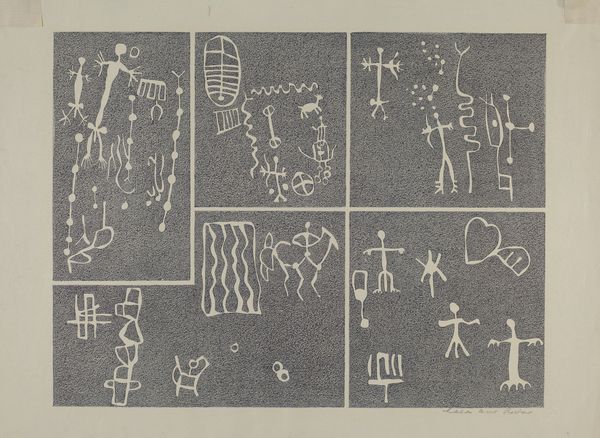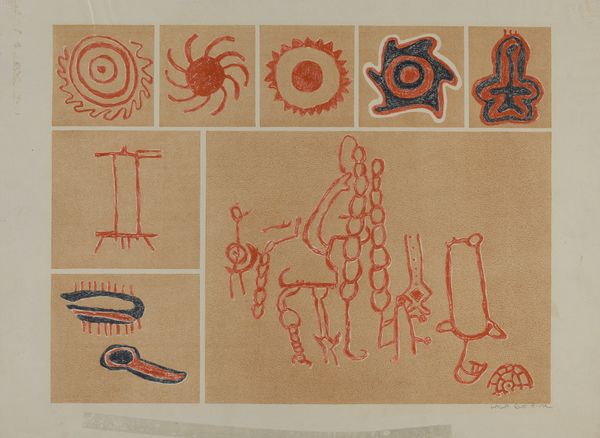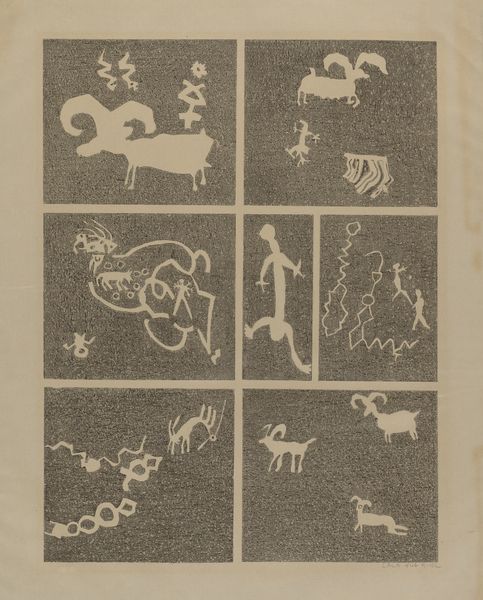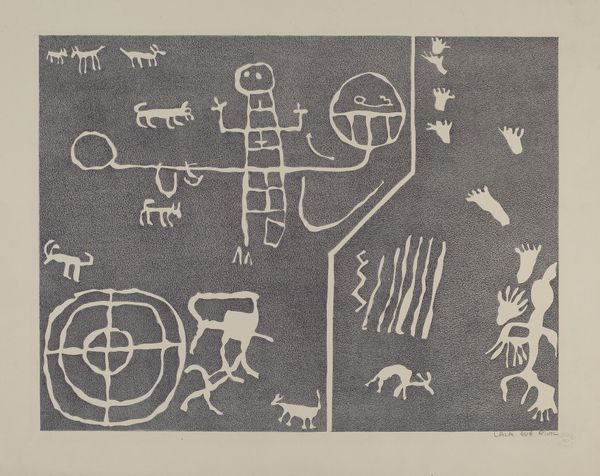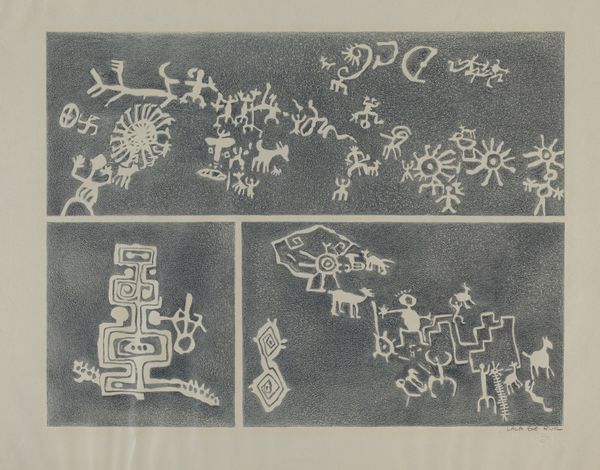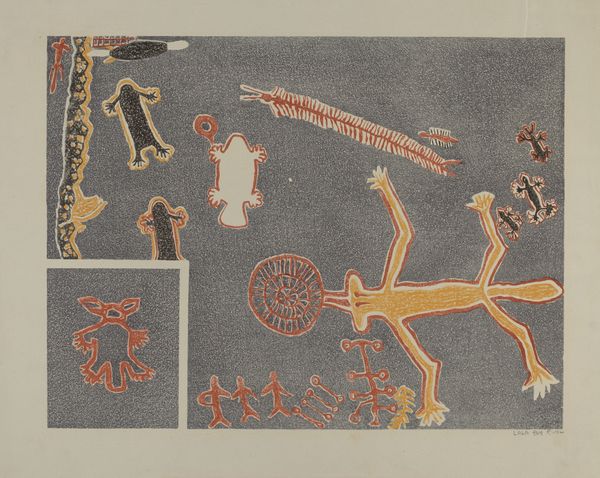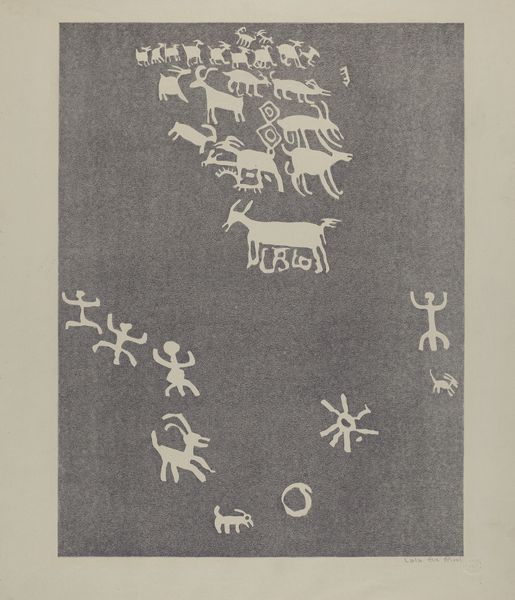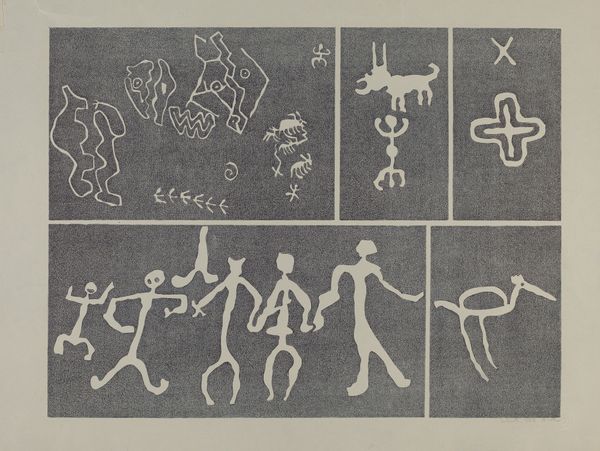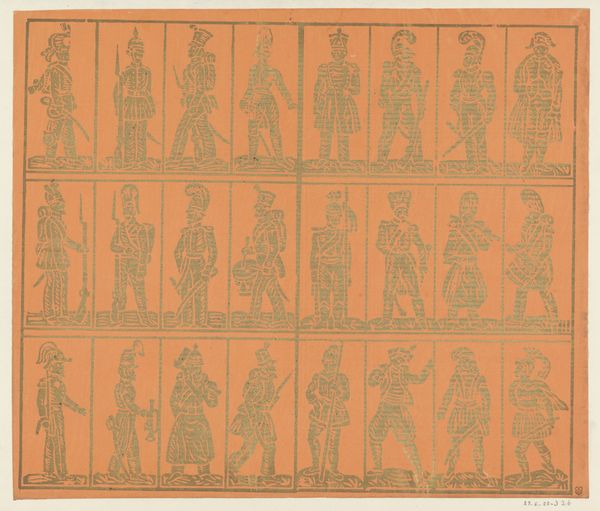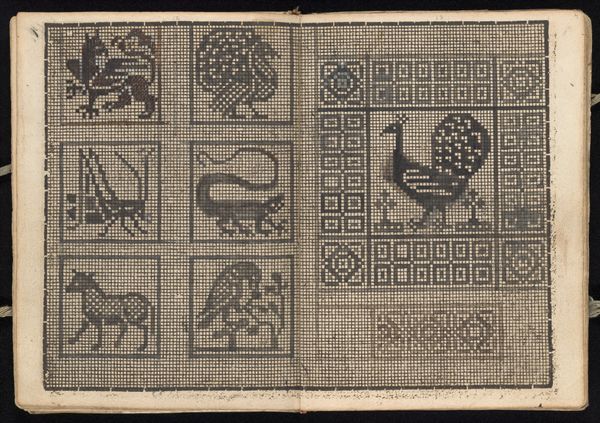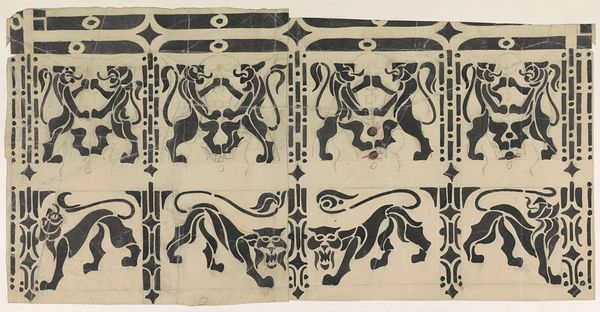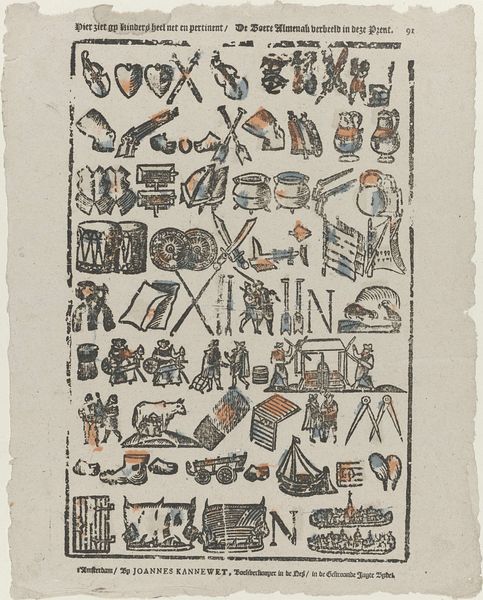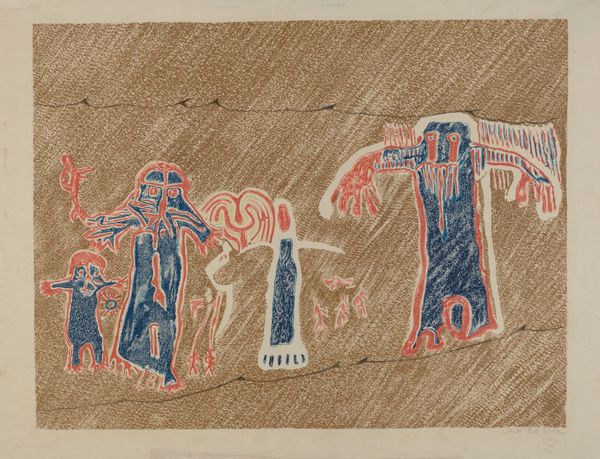
drawing, print, linocut
#
drawing
# print
#
linocut
#
figuration
#
linocut print
#
folk-art
#
geometric
#
ancient-mediterranean
#
line
Dimensions: Overall: 28.1 x 36.8 cm (11 1/16 x 14 1/2 in.) overall: 31.9 x 40.6 cm (12 9/16 x 16 in.)
Copyright: National Gallery of Art: CC0 1.0
Editor: Lala Eve Rivol's "Petroglyph Design," made between 1935 and 1942, is a fascinating linocut print. The arrangement of these figures in their individual frames almost reminds me of a storyboard. What's your take on it? Curator: The choice of linocut, a readily accessible printmaking technique, speaks to the democratization of art during the period. I see it engaging with the resurgence of interest in Indigenous art forms of the American Southwest during that time, reflecting on how those traditional glyphs might speak to contemporary social and political issues, especially around marginalized communities. Do you notice how the grid emphasizes each glyph as a self-contained narrative? Editor: Definitely, the framing makes me consider each image as its own entity while the composition links them. I was wondering, do you think the choice to emulate petroglyphs is a conscious statement, a reference to a specific culture or time? Curator: Absolutely. The act of "quoting" ancient art serves to connect to ancestral wisdom but, we must be careful not to essentialize or appropriate from these cultures. How can we, as contemporary viewers, responsibly engage with these echoes of the past in the present, knowing Rivol was a white artist working with these images? Editor: It definitely feels like an important consideration is to investigate her background to know how she understood what she was representing. Curator: Exactly. Thinking about the political climate of the time, where did indigenous voices factor? Editor: I suppose, not very much, but in our approach we have the opportunity to rewrite history by bringing forgotten voices. Curator: Yes! We must remain critical, accounting for the power dynamics inherent in representation itself. I’ve certainly learned something new thinking this through with you. Editor: Me too. It highlights how a work like this is less about the images themselves and more about their complex, ongoing relationship with their context and legacy.
Comments
No comments
Be the first to comment and join the conversation on the ultimate creative platform.
